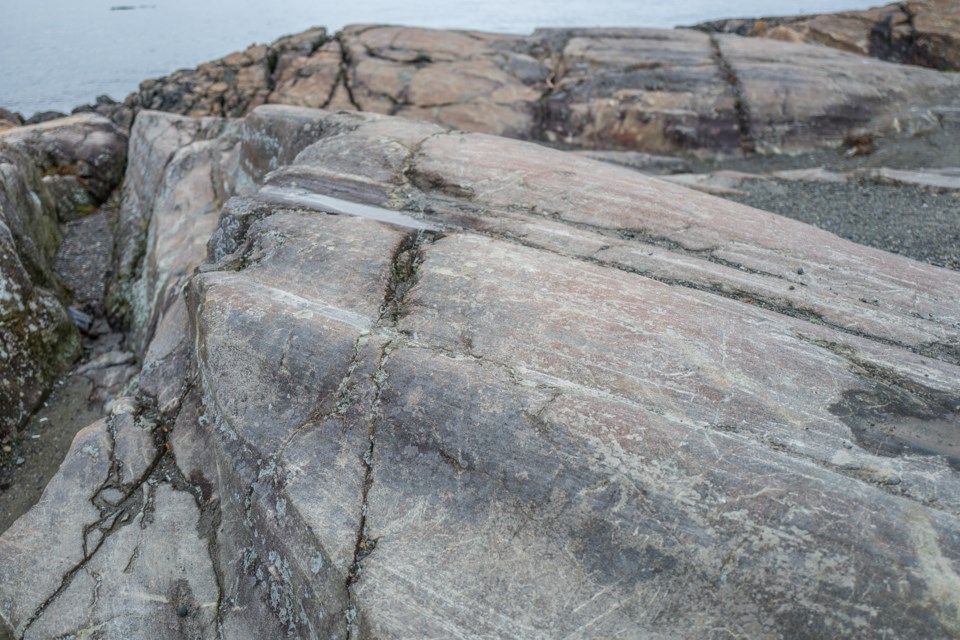It’s that time of year again—the snow is almost gone, exposing the stunning glacial landscapes around Whistler and the Sea to Sky corridor. One of my favourite viewing spots is the Tantalus look-out just north of Squamish, where you can see a spectacular selection of glacial features like jagged mountain peaks (horns), glacial ridges (arête), mountain bowls and dramatic, steep-sided U-shaped valleys. If you look closely you can also see lots of distinctive rock mounds, called roche moutonnée, with smooth, rounded, uphill slopes and steep, rough and irregular downhill surfaces.
These hummocky features come in all sizes from a few metres to hundreds of metres in length and are popular with skiers, snowboarders and bikers who enjoy the thrill of “big air” off these natural ramps.
The somewhat wacky name roche moutonnée was first used by Horace Bénédict de Saussure in the Swiss Alps, 240 years ago, when modern geology was in its infancy. Their asymmetrical shape reminded de Saussure of the fashionable fleecy wigs people were wearing at the time which (believe it or not) were smoothed over with sheep fat, hence roche (French for rock), and moutonnée, derived from mouton (French for mutton). So roche moutonnée means “fleecy rock.”
Despite their dodgy name, roche moutonnée outcrops are full of interesting features that give us a tantalizing insight into how they were formed and even the direction of ice movement.
The gently dipping uphill surface is created by “abrasion,” where rock fragments embedded in the base of the glacier rub against the bedrock as it passes by, wearing it away over time. Larger rocks scour and scratch the surface, leaving linear scratch marks called “striations,” and fine grit particles polish and smooth the surface similar to how sandpaper smooths wood. The steep, jagged lower cliff face is formed in areas where there are weaknesses in the rock surface. Here glacial meltwater finds its way into cracks and joints in the bedrock and freezes around chunks of rock that are forcibly “plucked” out and carried away by the glacier as it relentlessly moves down the valley, a process geologists call “quarrying” which produces steep, lower cliff face.
There are lots of fabulous and iconic roche moutonnée outcrops around Whistler and they are pretty much everywhere. Some of my favourites are around Wedgemount Lake where the granite rocks are freshly exposed by glacial recession, and on Cougar Mountain around the 1,400- to 1,500-metre mark where they are covered in a thick carpet of moss and look otherworldly. There is also a beautiful, classic-looking roche moutonnée next to the Fitzsimmons Walk townhouses north of the village. Finally, at the Malamute pull-in just south of Squamish, there are some superb roche moutonnée which geologists have called “whalebacks” because the outcrop surfaces look like a pod of whales swimming on the surface.
So, spring has sprung, and it’s time to get out and explore the geology around Whistler and our beautiful environment, carved out by Ice Age glaciers leaving behind a whole smorgasbord of glacial features within a dramatic glacial landscape. A good place to start is the distinctive glacial hummocks weirdly called roche moutonnée.
Naturespeak is prepared by the Whistler Naturalists. To learn more about Whistler’s natural world, go to whistlernaturalists.ca.




